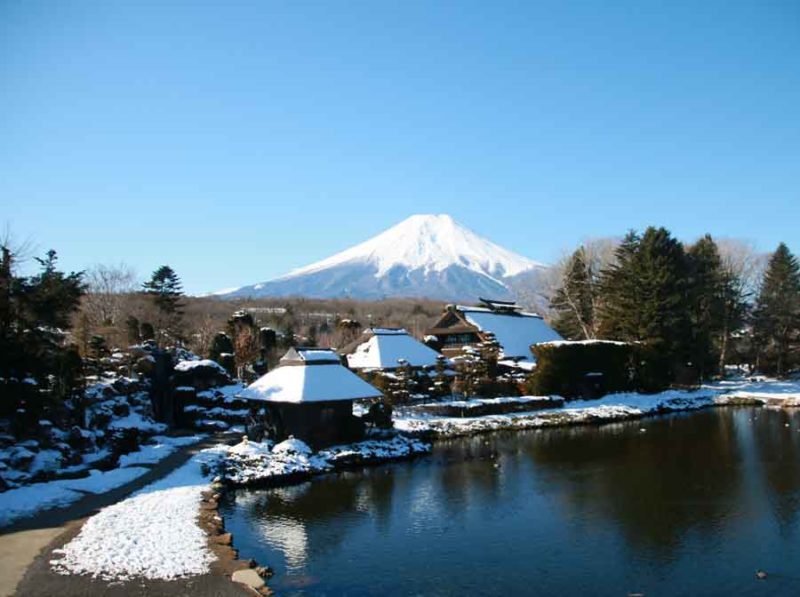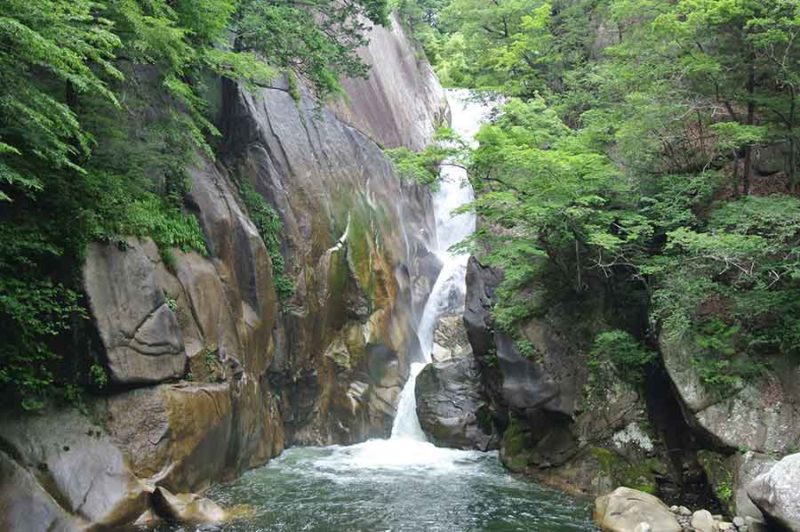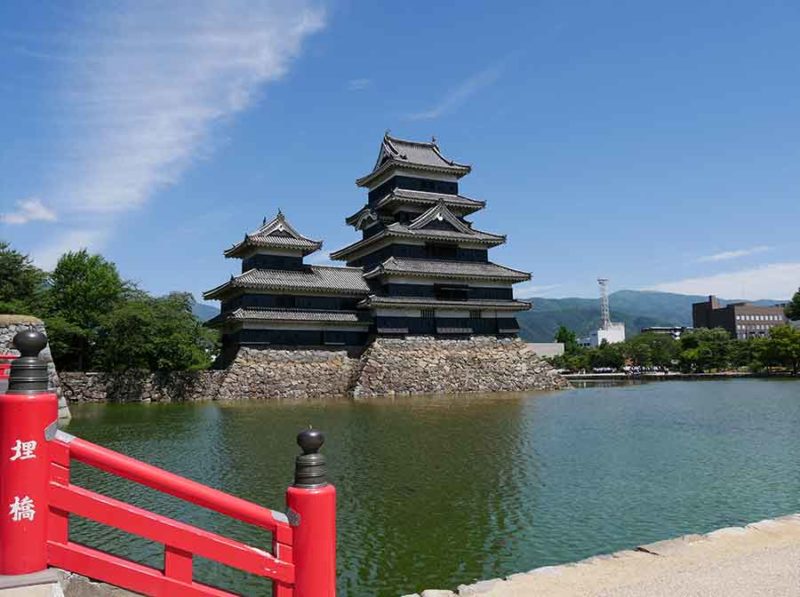Aside from big cities like Tokyo and Osaka, most of Japan consists of steep mountains that come down almost to the shore. Of all the mountains and hills, Mt. Fuji is the most famous and it serves as an iconic symbol of Japan. In fact, Mt. Fuji is regarded as the mountain of the gods by Japanese. Thus water, rivers, and lakes in the area also have spiritual prominence to the Japanese people. To encounter a Japan that cannot be found on travel brochures and to understand more about Japanese history and culture, I embarked on a four-day, three-night trip from Tokyo to Mt. Fuji, the Japan Alps and several renowned mountain resorts in the area.
By Stacey Bird

My first stop was Oshino Hakkai Springs at the foot of Mt. Fuji. Here, you can find eight crystal clear ponds fed by snowmelt from Mt. Fuji. The snow water seeps slowly to the bottom and is filtered through various rock layers before arriving at Oshino Hakkai 80 years later.
In the past, pilgrims en route to Mt. Fuji would purify their bodies in one of the eight ponds before climbing the sacred mountain. The ponds were truly mesmerizing, with transparent, turquoise water that adds a touch of mystery to the ambiance. By the way, when it comes to mystery, do not want to miss Oshino Ninja Village, a one-of-a-kind theme park close by that allows you to live a day of a Japanese ninja. Kofu is the homeland of Takeda Shingen, a famous warrior from the Warring period (1521-1573). You might even encounter the ninjas who traveled back in time to serve Shingen. Kitaguchi Hongu Fuji Sengenjinja Shrine, the starting point of the pilgrimage to Mt. Fuji, is also said to be related to Shingen. Walking up the path leading to the shrine, I felt as though I had stepped into a different realm. Once here, you should take a closer look at the shrine, as it was built with the finest materials and craftsmanship. Highland Resort Hotel & Spa was my hotel for the night. I was impressed by a magnificent view of Mt. Fuji and the hospitality there.
Learn more about this area

The next day, I went over the mountain to the Kofu area. Located on the north part of Kofu, Shosenkyo is said to be the most beautiful gorges in Japan. You can enjoy a tranquil walk in the forest, lay eyes on unique waterfalls and oddly-shaped rocks, as well as take the ropeway for a panoramic view of Mt. Fuji. There are also a lot of historical sites worth visiting, such as Takedajinja Shrine, built on the ruins of the Takeda residence. If you are a hot spring lover, you will be torn between which onsen to go to. This area is home to Yumura Onsen kyo(Area), Isawa Onsen kyo and many more charming hot springs.
I stayed in Tokiwa Hotel with a traditional Japanese garden and great local cuisine in Yumura. For a more traditional Japanese onsen experience, I would highly recommend Ryokan Kidori in Isawa. Fuefuki City is not only famous for the above onsens but known for producing peaches and grapes of an exceptional taste and quality. In spring, peach blossoms bloom everywhere. Also, visitors can enjoy fruit picking from summer all the way to Fall. There are quite a few wineries that make wines from locally grown grapes so the city is also nicknamed Japan’s “Wine Town”
Learn more about this area

My next destination is Matsumoto in Nagano Prefecture, a prefecture nestled at the base of the Japan Alps. I took the bus from the city center to Kamikochi, which means “the land where God descends” in Japanese. From the Kappabashi, a suspension bridge spanning over Azusa River, you can enjoy a picturesque view of mountains, Taisho Pond and Myojin Pond, among others. Hotel Buena Vista near the Matsumoto Station is where I stayed for the third night.
The next day I explored the Matsumoto Castle and the Nakamachi dori Street, where black and white buildings known as namako-kabe storehouses line the street. Thanks to Matsumoto City’s supply of ground water, fresh spring water wells up the Northern Japan Alps including Norikura-dake. Here you can feel that the neighborhood is closely connected to the natural environment surrounding it.
Learn more about this area
